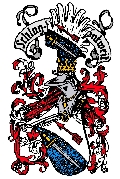
Brothers
> Prehistory
India & high Asia
Map of India
Prehistory in the Alps
The father Joseph August Schlagintweit, born on 7.12.1791 in the Bavarian Forest, was a man of science. After he studied medicine at the University of Landshut (Northeast of Munich) he became a practical and opticial doctor in Munich. He opens a private hospital for eye diseases there in 1822.
With Rosalie Seidl, née Hoegersbraeuerin, who Joseph Schlagintweit married in 1824, the Schlagintweit house experienced new influences. The new lady of the house concerns itself passionately with the beautiful arts.
On 13.05.1826 Hermann is born, the first of five brothers, Adolph on 09.01.1829, Robert on 27.10.1833, as well as the brothers Emil and Eduard.
The boys were given a global education from the start. Private tutors took over their special scientific education, as their father wished. But also the influence of their mother, a lover of arts, does not remain fruitless. Courses of the Munich painter Dillis are attended, the eyes of the children are opened to the wonder of the arts. When the boys lost their mother during the birth of the sixth child in 1839, the inheritance of artistic gift and enthusiasm remains with them.
In 1842 Hermann and Adolph undertook the first large mountain hike, a shaping experience.
The foot journey, which has its start in Wessobrunn (Southwest of Munich), led them first to Tegernsee (Village and lake South of Munich). As Adolph later judged to the "magnificently dressed towndwellers, gentlemen with feather hats and fracks, ladies in velvet and silk, who are a ridiculous contrast to the simply raised splendour of the nature, which surrounds us here".
Further stations are the Achensee (village and lake more South, but in Austria) and the Zillertal (valley further South, also in Austria), Innsbruck (Austria) and the Partnachklamm (part of river in a deep valley next to Garmisch-Partenkirchen, Germany), "an awful crevasse". The journey instills the young hikers with a passion for the mountain world.
Like that it is a little amazing that Hermann gave up his study of medicine, which was begun because of his fathers desires, and started studying geography. 1847 the first scientific publication comes out: "glaciers of the Ötzthal" (valley between Innsbruck, Austria, and the country-triangle Austia-Switzerland-Italy). This was followed by extensive geological, glaciological, and botanical investigations of different alpine regions. Adolph was highly interested in his brother's work, helping him whenever his schoolwork allowed him some spare time.
In the summer of 1848 the brothers succeed during research work to the Pasterze* during "a few warm days" mounting the Großglockner (highest mountain of Austria; * "Pasterze" is the name of the glacier around that mountain), also Similaun and Wildspitze were mountained later.
In 1849, the brothers released the results of their alpine research in their first joint publication, "Investigations on the physical geography of the Alps and their relationship to the phenomena of the glaciers, geology, meteorology, and botany".
This work as well as the publications which followed opened the door to close contact with the elderly Alexander von Humboldt, whom they got to know after they moved to Berlin. Hermann Schlagintweit habilitated in Berlin, Adolph in Munich.
Their interest for Alpine regions remained unabated, however, and they set out to climb the Monte Rosa (mountain on the border Italy-Switzerland) in the summer of 1851. But "the narrowness of the rocks close to the top" and "the steepness of the rocks" force the brothers to turn around 7 meters before they got to the top of the Monte Rosa.
In these years the Schlagintweit Brothers gained important experiences for their later research years in India.
Back to the overview Go on to the journey to India an high Asia
Copyright: Michael Schlagintweit 05.05.2018

